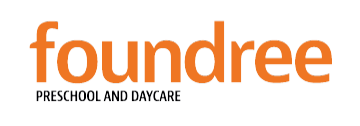
The development of your child is influenced by numerous variables. Many parents think that the education and atmosphere their children need to thrive are provided by the school, but in actuality, a lot depends on their teachers and other students. A child’s effective development during their adolescent years depends on five key factors.
Development
Physically, socially, emotionally, linguistically, literately, and in terms of thinking (cognitive) abilities are all areas in which your child is still growing. In every one of these areas, teachers help her. Your child’s ability to move her arms, legs, fingers, and hands (large motor abilities) are indicators of her physical development (small motor skills Teachers give students a variety of physical activities and resources to help them learn these skills. As they get older, your child might develop more social skills. To instill cooperation and respect for others, teachers and students collaborate. Playing and learning together helps kids develop their self-control, language skills, and social skills. The emotional maturity of your child affects how well he or she understands both his or her own and other people’s feelings. Teachers support their pupils in recognising and managing their own feelings and behaviours.
Preschool Curriculum Implementation
The majority of preschools have a philosophy and a set of objectives that all teachers must follow. Teachers occasionally adhere to these general principles informally. Teachers frequently utilise specialised lesson plans and rubrics to gauge the achievement of their students. A preschool curriculum may also include assignments for the child to complete at home to reinforce lessons taught in class. Although it might appear that a preschooler spends the entire day playing in the classroom that is not the case. Though kids undoubtedly have a lot of fun, play is so much more than that.
Literacy Abilities
Helping your child communicate via reading, writing, listening, and talking is the main goal of developing literacy skills. The cornerstone for all of these talents is literacy, and a top-notch preschool programme may assist in establishing good concepts and communication skills.
Creative arts
Children use several methods to convey their thoughts and feelings. It might be done through pretending, dancing, or painting. Writing stories or coming up with techniques to stop the snow in the water table from melting quickly are just two examples of how creativity may be exhibited and how it promotes all areas of learning. In order to push your preschooler’s creativity, teachers supply a variety of open-ended materials (playdough, seashells, chalk), as well as a setting that promotes their abilities.
Toddlers have so much to learn in a Preschool Program teachers can modify their instructional strategies to meet the requirements of particular students in their classroom through preschool activities. Despite the fact that not all preschools follow the same educational standards, they all aim to prepare pupils for kindergarten. As a result, the most effective preschools focus on developing students’ math, science, and literacy skills.

